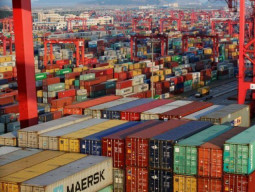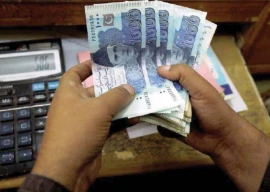
Standard & Poor’s Ratings Services (S&P) on Monday affirmed its ‘B-’ long-term and ‘C’ short-term foreign and local currency sovereign credit ratings on Pakistan. The outlook on the long-term rating remains stable.
Furthermore, S&P also affirmed its ‘B-’ issue rating on Pakistan’s senior unsecured local-currency debt and its ‘B-’ transfer and convertibility assessment.
In addition to these, it affirmed the ‘B-’ issue rating on the sovereign’s senior unsecured foreign-currency debt, as well as its recovery rating of ‘3’, which denotes expectation of a meaningful recovery of 50% to 70% in the event of a distressed debt exchange or payment default, an S&P statement said.
“We could lower the ratings if major slippages in policy occur, resulting in renewed balance of payments difficulties or rising public debt trajectory. Conversely, we could raise the ratings if Pakistan shows progress in its fiscal consolidation efforts, manifested in moderating fiscal deficits and steady reduction in the public debt burden,” the statement added.
“The ratings affirmation takes into account Pakistan’s low-income level, high public and external leverage, political and security risks and fiscal inflexibility due to an exceedingly narrow tax base,” said S&P credit analyst Agost Benard.
“These constraints are balanced against an adequate external liquidity position – largely due to the earlier IMF standby loan agreement and donor support.”
High public and external indebtedness is a rating constraint. The rating agency estimates net general government debt at 50% of gross domestic product (GDP) in 2011 and about 40% of it is external debt.
However, the country’s adequate external liquidity supports the ratings. Buoyant remittance inflows, successive loan disbursals by the IMF and other multilateral loans have materially reduced the risk of near-term external payment difficulties.
Although the current level of external liquidity is likely to diminish somewhat, given the expiry of the IMF loan programme in September and the current account likely returning to a deficit position, “we expect donor commitments will ensure at least adequate external liquidity in the next two years,” the statement said.
The stable rating outlook balances adequate external liquidity against vulnerability stemming from ongoing structural fiscal weaknesses and significant political and security risk.
Published in The Express Tribune, November 1st, 2011.












































COMMENTS
Comments are moderated and generally will be posted if they are on-topic and not abusive.
For more information, please see our Comments FAQ